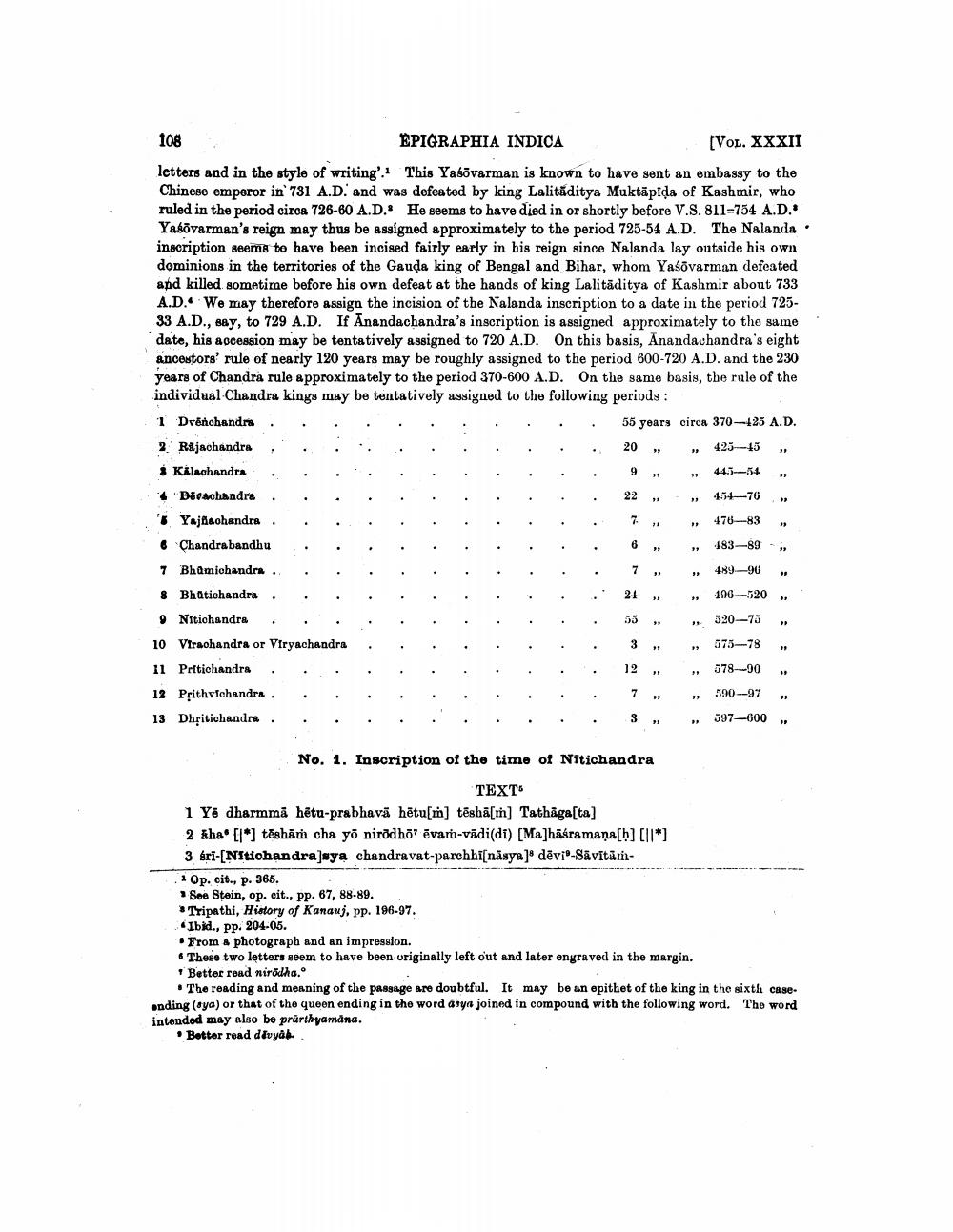________________
108
EPIGRAPHIA INDICA
[VOL. XXXII letters and in the style of writing'. This Yasōvarman is known to have sent an embassy to the Chinese emperor in 731 A.D. and was defeated by king Lalităditya Muktapiḍa of Kashmir, who ruled in the period circa 726-60 A.D. He seems to have died in or shortly before V.S. 811-754 A.D. Yasōvarman's reign may thus be assigned approximately to the period 725-54 A.D. The Nalanda⚫ inscription seems to have been incised fairly early in his reign since Nalanda lay outside his own dominions in the territories of the Gauda king of Bengal and Bihar, whom Yasōvarman defeated and killed sometime before his own defeat at the hands of king Lalitaditya of Kashmir about 733 A.D. We may therefore assign the incision of the Nalanda inscription to a date in the period 72533 A.D., say, to 729 A.D. If Anandachandra's inscription is assigned approximately to the same date, his accession may be tentatively assigned to 720 A.D. On this basis, Anandachandra's eight ancestors' rule of nearly 120 years may be roughly assigned to the period 600-720 A.D. and the 230 years of Chandra rule approximately to the period 370-600 A.D. On the same basis, the rule of the individual Chandra kings may be tentatively assigned to the following periods:
1 Dvenchandra
2 Rajachandra
Kalachandra
Dirachandra
Yajachandra
• Chandrabandhu
7 Bhamichandra ..
8 Bhatichandra
9 Nitichandra
10 Virachandra or Viryachandra
11 Pritichandra
12 Prithvichandra.
13 Dhritichandra
55 years circa 370-425 A.D.
20
425-45
445-54
454-76 "
476-83
483-89
489-96 490-520
320-75 575-78 " 578-90
590-97 597-600
9
22
6
7
24
55
3
12
7
"
72
33
33
33
33
"
"
No. 1. Inscription of the time of Nitichandra
TEXT
1 Ye dharmmā hêtu-prabhava hētu[m] tesha[m] Tathaga[ta]
2 kha* [*] tesham cha yō nirodhō' ēvam-vādi(di) [Ma]hāśra mana[b] [||*]
3 sri-[Nitiohandra]sya chandravat-parchhi[nasya] devi-Sävitam
""
"
33
33
"
"
"P
1 Op. cit., p. 365.
See Stein, op. cit., pp. 67, 88-89.
Tripathi, History of Kanauj, pp. 196-97.
Ibid., pp. 204-05.
From a photograph and an impression.
These two letters seem to have been originally left out and later engraved in the margin.
Better read nirodha.
"
"
33
"
37
"
39
"
"
The reading and meaning of the passage are doubtful. It may be an epithet of the king in the sixth caseending (sya) or that of the queen ending in the word asya joined in compound with the following word. The word
intended may also be prarthyamāna.
Better read divyab.




